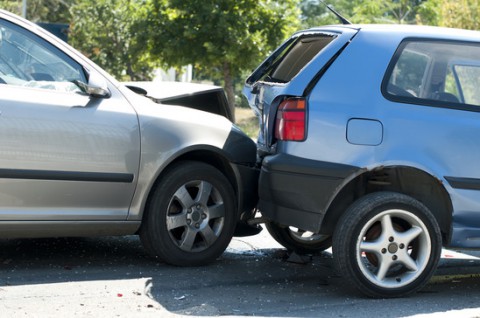Legal Blog
Chain Reaction Accidents: Determining Fault
One car rear-ends another on the highway. In seconds, the collision sets off a chain reaction that leads to several cars rear-ending each other. Chain reaction accidents can be deadly at worst and a headache at best, but they're almost always complicated when it comes to determining fault.
When determining fault in a chain reaction accident, it helps to pinpoint the cause of the incident. Several factors can contribute to a multi-vehicle accident, including: distracted driving, poor road or weather conditions, vehicle speed, driver impairment, etc.
According to Ankin Law Office LLC's website, "In some cases, a single driver or road condition may be at fault. Frequently, however, chain reaction accidents are the result of the combined actions of multiple drivers, road and weather conditions."
Oftentimes, chain reaction accidents are caused by drivers following each other too closely.
Determining Fault in Chain Reaction AccidentsKnowing the cause of the accident can be helpful in determining fault, but drivers who make claims with their insurance companies will need to prove that the other driver was negligent. In some cases, several drivers can be considered negligent.
Let's say there were three drivers involved in the accident: A, B and C.
Let's say driver A had to stop short due to an unexpected road condition. Driver B rear-ended driver A because he was following too closely, and consequently, driver C didn't have enough time to stop and hit driver B. Driver A would feel two impacts: the first hit by driver B and the second hit by driver C. In this scenario, driver A could file a claim or lawsuit against both drivers B and C, and leave them to sort the rest out amongst themselves.
This example scenario is common with multi-car accidents, but driver A isn't always the "innocent" party.
There are a few ways to determine fault in chain reaction accidents.
- Police reports, which give accounts of the accident and the reporting officer's determination of whether any driver had committed a traffic offense.
- Eyewitness accounts from passengers in the vehicles, other drivers and passers-by.
- Evidence gathered at the scene of the accident.
- Damage to the vehicles.
It's often assumed that the person in the rear of the accident is at fault for the incident, but this isn't always the case. In some cases, the person in the middle of the chain or the front of the chain may be at fault for the incident.
Recovering DamagesStates have their own laws when it comes to negligence. In states with comparative negligence, a claimant's recovery will be reduced by his or her percentage of fault. States may have pure comparative negligence laws, or modified comparative negligence.
With pure comparative negligence, a driver would be able to recover even if he or she was found to be 99% responsible for the accident. With modified comparative negligence, drivers can only recover if they are less than 50% or 51% responsible for the incident.
In states that have the contributory negligence rule, claimants cannot recover any damages if they are found to be 1% or more at fault for the incident.


Comments